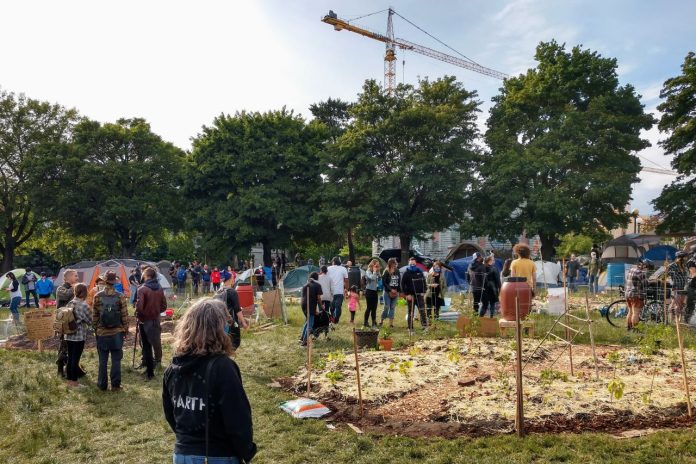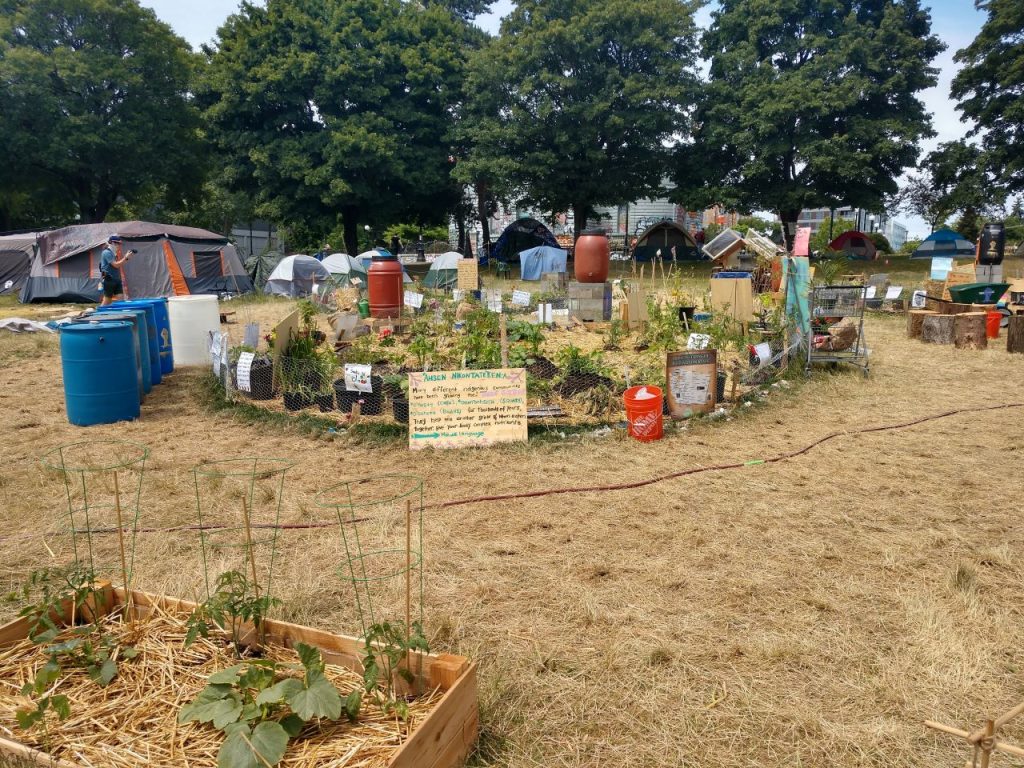
Seattle Parks and Recreation recently announced its intent to erase the Black Lives Memorial Garden in Cal Anderson Park, a move as cowardly as it is offensive, echoing a history of redlining and racial discrimination that persists in American institutions today.
Cal Anderson Park, named for the first openly gay member of the Washington State Legislature, itself holds a legacy of protest. Most recently, the Capitol Hill Organized Protest (CHOP) found its home there during 2020 demonstrations against police brutality when a standoff with the East Precinct of the Seattle Police Department ended in the abandonment of the building.
Yet, despite complaints from some Capitol Hill residents and a failed mediation with the Parks department, who incidentally began and then abandoned a community dialogue about the garden in 2020, the Black Lives Memorial Garden has persisted. It has moved beyond an origin story symbolic of opportunity, joy, and resilience during a time of collective darkness. Now, the Black Lives Memorial Garden reminds us that Black, Indigenous, and People of Color in Seattle continue to be marginalized by a government that has so neglected their communities it cannot even recognize the incredible achievement of their resilience.
The Parks department plans to engage in “turf restoration” on the Sun Bowl, an area of the park just north of the shelter house and public restrooms and currently home to the BLM Garden, stewarded by Black Star Farmers, a coalition dedicated to the radical reclamation of land and food sovereignty. Parks offers that, “It remains one of the few spaces that is appropriate to host gatherings and large events in Cal Anderson Park.”
Perhaps Parks should consider improving its own maintenance of critical infrastructure such as often-closed public restrooms rather than disrupt successful community stewardship of an urban garden. Perhaps, in fact, it should fund these stewards for their good work.
Instead, the department has suggested to Black Star Farmers that the garden be moved to Rainier Beach, out of Capitol Hill whose southern border forms the original redline in Seattle and into a neighborhood home to mostly Black, Indigenous, and People of Color. As ideas go, this one couldn’t be more out of touch.
First of all, whose turf, exactly, are we talking about restoring? Parks may be responding to requests from community members who dislike the placement of the garden and its disruption of movie nights, which despite the claim have continued in the park through the summer of 2023. Or it may just be fed up with having to contend with yet another user group that it can’t control perfectly.
In any case, if Seattle Parks truly cared about “turf restoration,” it would be focused on the upper meadow at the north end of the park where off-leash dog owners have allowed their pets to churn the grass into giant swaths of mud. Yet there seems to be no conflict with this user group.

Second, and perhaps more sinister, is the simple fact that the Sun Bowl, a small tract of land currently decorated with native plants, vegetables, flowers, and signifiers of the diverse identities of its caretakers, is neither the largest nor the only available space for events in Cal Anderson Park. In 2022, the Parks department began permitting events in the Upper Meadow. This writer has herself organized several permitted events there and has attended others. No, this is a case, yet again, of a government entity offering scraps to a community and inciting discord.
How we share public resources like parks, sidewalks, streets, and waterways is as much about meeting our own needs as it is about making sure our communities are resilient to stressors like climate change, a pandemic, or economic downturn. We should not accept that our choices are as limited as we are told they are – only that our government is uncreative and stuck in scarcity mode.

Erin Fried
Erin Fried is a writer, planner, and facilitator with expertise in urban planning, disaster recovery, peace-building and the arts. She is a board member of The Urbanist and of the Cal Anderson Park Alliance. Views presented in this article are hers alone and not representative of any organization.

